2018-12-08
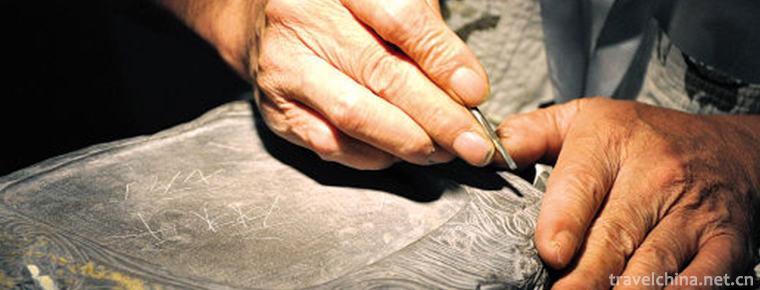
- By ChinaWiki.net
- Chinese Edition
- 2019-04-28
Duan Inkstone Production Techniques
Duan inkstone production technology, Zhaoqing City, Guangdong Province, traditional handicraft, one of the national intangible cultural heritage.
The production process of inkstone is very complicated, which is mainly made by quarrying, material selection, pulp making, design, sculpture, box matching, polishing, waxing and other processes.
On May 20, 2006, the inkstone making skills were approved by the State Council of the People's Republic of China and listed in the first batch of national intangible cultural heritage list, project number_-75.
historical origin
Duanyan is famous in Tang Dynasty, prosperous in Song Dynasty, skilled in Ming and Qing Dynasty, less than the late Qing Dynasty and early Republic of China, and revitalized in the contemporary era. Inkstones produced in the early Tang Dynasty were mainly practical, simple in shape, mainly dustpan-shaped and square in shape. Inkstone feet showed a trend of changing from three feet to more feet to adapt to the habit of sitting on the floor at that time. In the middle of Tang Dynasty, inkstone tables were carved with various patterns and patterns, which began to enhance the ornamentation on the basis of practicality, and changed from practical products to practical crafts.
By the Song Dynasty, Duan inkstone began to become a fine collection of appreciation, gift and collection among literati and ink-writers, and many related monographs were published, such as Ouyang Xiu's Inkstone Spectrum, Mi Fu's Inkstone History, Ye Hui's Duanxi Inkstone Spectrum, etc.
In the Ming Dynasty, Duan Inkstone was skillfully crafted by nature. Its style was square and heavy, and its decoration was richer and more elaborate. Common symbolic themes such as flowers and birds, fish and insects, landscapes and characters were common, and the atmosphere of inscriptions was formed. At this time, due to many years of inkstone mining, gradually scarce, appreciation and collection of inkstone is more and more popular.
At the beginning of the Qing Dynasty, the inkstone reached unprecedented prosperity. While inheriting the style and style of previous works, it was influenced by stone carving, silver casting and woodcarving. It made many innovations in inkstone material, shape, carving skills and pattern evaluation. At that time, there were Gu Erniang in Suzhou, Wang Xiuyun in Jiangnan and Huang Zongyan in the production of inkstone. There were also a number of famous collectors of Duan Inkstone (including other inkstone platforms), such as Ji Yun, Gao Fenghuan, Zhu Yizun, and so on. After Jiaqing and Daoguang, Duan inkstone artists gradually lost their practical value and became mere entertainment, resulting in the formation of the concept of winning by work, which was difficult to break through in art; some famous pits were stopped because of collapse, and stone sources were limited; by the end of the Qing Dynasty and the beginning of the Republic, many inkstone artists had been scattered around or transferred to work, and Duan inkstone declined.
Since the 1950s, the scattered inkstone-making artists organized by the government returned to the team. The pits of Ma Zi, Lao Keng and Keng Zai Yan, which had been stopped mining, gradually reopened, and the production skills of the inkstone gradually recovered.
Process characteristics
texture
Duan inkstone is well-known for its solid, lubricating, delicate and delicate stone. It is used to grind inkstone without stagnation, to send ink quickly, to produce fine and smooth ink, to write smoothly, and to keep the color of handwriting unchanged for a long time. Good Duan inkstone, whether in the heat or in the severe winter, is pressed by its inkstone heart by hand, with a blue inkstone heart, and long-lasting water atmosphere. Ancient people said that "Ha Qi Yan Inkstone".
style
Traditional inkstones pay attention to the design of styles. According to different shapes of inkstones, different carving themes and decorative patterns are selected. These themes and patterns are very rich. They are not only traditional themes and patterns, but also themes and patterns reflecting Lingnan's local characteristics. Those works with native lotus, sword flowers and other flowers, as well as native fragrant coke, litchi and other fruit composition, have a strong "Guangdong" flavor, very rich Lingnan characteristics.
Technological process
Technological process
The production process of end inkstone is complex and there are many processes. There are mainly quarrying, maintenance, pulp making, sculpture, polishing, matching boxes and so on.
To quarry stone
Duanxi Stone is aseismic, and quarrying is mainly manual. According to the trend of stone veins, quarrymen excavate deep and dig under joints, which requires high quarrying technology and is difficult to exploit. There is a saying that "one catty of stones is worth a thousand gold".
Dimension material
That is, screening and grading the extracted inkstone, removing the waste, requiring the inkstone trade union to look at the stone, select the stone, and make various forms of inkstone according to the shape of the stone.
Making jade
On the one hand, the quality of inkstone is evaluated by the inkstone of Motang. When making inkstone, the best place of inkstone should be reserved for the Motang. The inkstone form should be conceived and designed by integrating the characteristics of literature, history, painting and stone.
carving
The first several processes test the ability of stone mason inkstone worker to "see through the stone", while sculpture fully tests the ability of inkstone worker to select topics, ideas, composition, shape and sculpture techniques. Whether natural and simple inkstone can be transformed into exquisite crafts, the sculpture link is particularly important. Depending on the subject matter, inkstone and inkstone style, the knife and technique of sculpture are mainly deep knife sculpture, supplemented by shallow knife sculpture and meticulous sculpture, showing a vigorous and bold style, while shallow knife sculpture, line sculpture and fine sculpture show a delicate and implicit style.
Matching box
When the inkstone carving is finished, considering the decoration and practicality, and matching with precious wooden boxes, the inkstone becomes more simple, dignified and precious.
Polish
Carved end inkstone, first refine the river sand rough grinding, grinding the chisel, knife path; then use talc, fine sandpaper, preferably 1000 mesh of water sandpaper repeatedly grinding, so that the inkstone feel smooth until the end; and finally "dip in the marble", after a day or two of ink-fading treatment.
Tool
Quarrying tools
Because of the quarrying environment, the ancient inkstone pit is about 80 centimeters high, and the quarrymen can only squat, sit or lie on the rock. The main quarrying tools are pointed iron chisel, iron pen, hammer, gun chisel, lamp and so on.
Carving tool
Because of the hardness of inkstone, carving skills and subject matter needs. Carving tools include hammer, chisel, chisel, wood drill, saw, talc, Gongfu platform, etc. Before the 1970s, tools were mostly made by quarrymen or inkstoners, and then produced professionally.
Inheritance and protection
Inheritance value
Duan inkstone has high artistic value, collecting value and humanistic value. Duan inkstone produced in Zhaoqing City, Guangdong Province, not only maintains the traditional cultural and local characteristics of traditional crafts, but also has new breakthroughs in shape, composition, theme and conception, creating a new artistic conception beyond the practical use of Duan inkstone, such as Duanzhou Gu Shao Tu Da Duan Inkstone, which ingeniously shrinks Gu Duanzhou into inches, and so on. Wonderland three-dimensional carving large end inkstone, the end inkstone carving into a body of a crocodile, a cicada, a pile of melons and fruits, a group of immortals, and ingeniously collect the inkstone pool, which looks like sculpture, antiques, but also Polish ink, it is amazing.
Inheritance status
Under the new historical conditions, mechanical production impacts on the production of end inkstone, and the traditional way of inheritance of memory leads to the shortage of artisans. Only by solving these problems seriously, can the traditional production techniques of end inkstone be effectively protected and continued.
Inheriting characters
Cheng Wen, male, Han nationality, born in 1950, was selected as the representative successor of the first batch of national intangible cultural heritage projects in June 2007, and declared in Zhaoqing City, Guangdong Province.
protective measures
At the beginning of the 21st century, in order to actively tap and promote the education and popularization of Duan Inkstone culture, Zhaoqing Duan Inkstone Association was formally established. In 2006, Duan Inkstone production technology was listed in the first batch of national intangible cultural heritage list. While the number of practitioners increased, Zhaoqing also carried out activities such as Duan Inkstone Culture into the campus, so that more young people can understand and participate in them.
Duanzhou District has built a "national name" Duanyan base with RMB 500 million, polishing the "Inkstone Capital" business card for Zhaoqing, laying a foundation for the construction of Duanyan Village, Inkstone pit and Inkstone Island Industrial Agglomeration Park in Zhaoqing, and accelerating the "Chinese Inkstone Capital (Zhaoqing) Duanyan Cultural Industry Agglomeration Park".
social influence
Duan inkstone was identified as a VIP gift at the 2008 Beijing Olympic Games and the 2010 Guangzhou Asian Games. Duan inkstone, as a VIP gift for the Games, has become a unique carrier for publicizing humanistic China.
In 2010, Duan inkstone production skills were rated as one of the top ten business cards of Lingnan culture.
Cultural anecdotes
One day when an old inkstone Road passed Duanxi, he saw two cranes flying down the stream and never getting up. He was suspicious and caught them in a net, but what he picked up was a stone! However, this stone is very strange, there are cracks, from time to time crane sounds, the old inkstone worker along the crack to pry open the strange stone, the strange stone actually divided into two, into two inkstones, inkstone side each has a crane standing on the pine. News spread, inkstone workers have imitated, or exhibited their skills, carved on the inkstone platform with a variety of patterns.
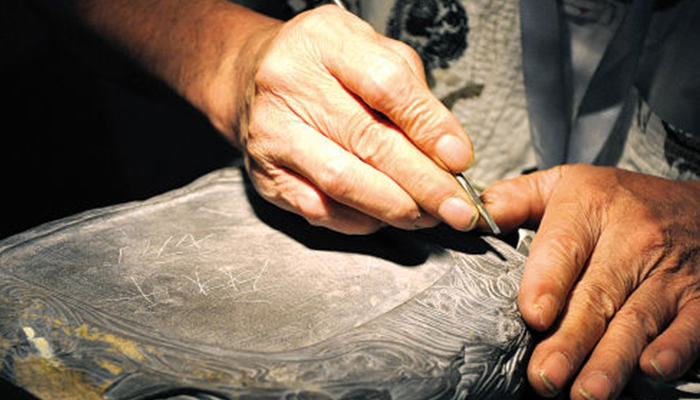
Ask a Question
Your email address will not be published.
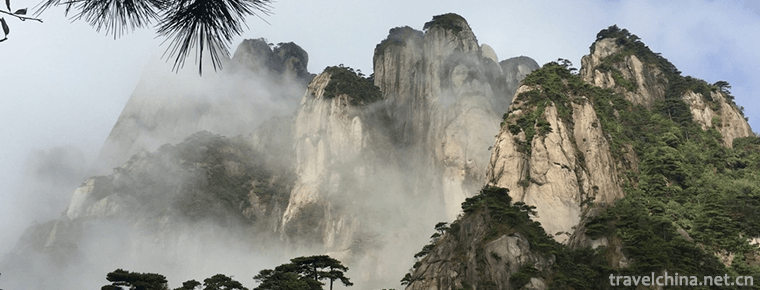
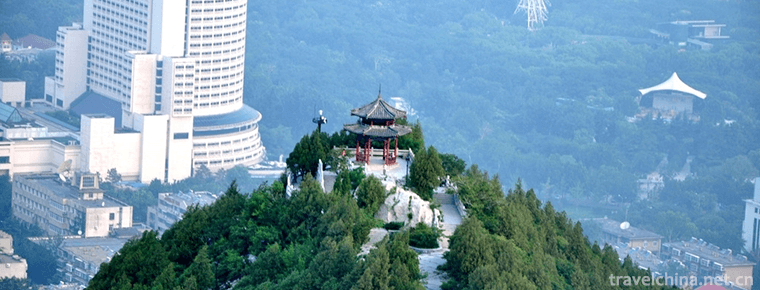
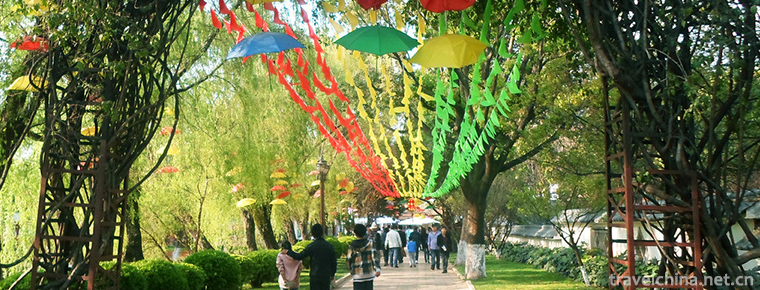
0 Questions